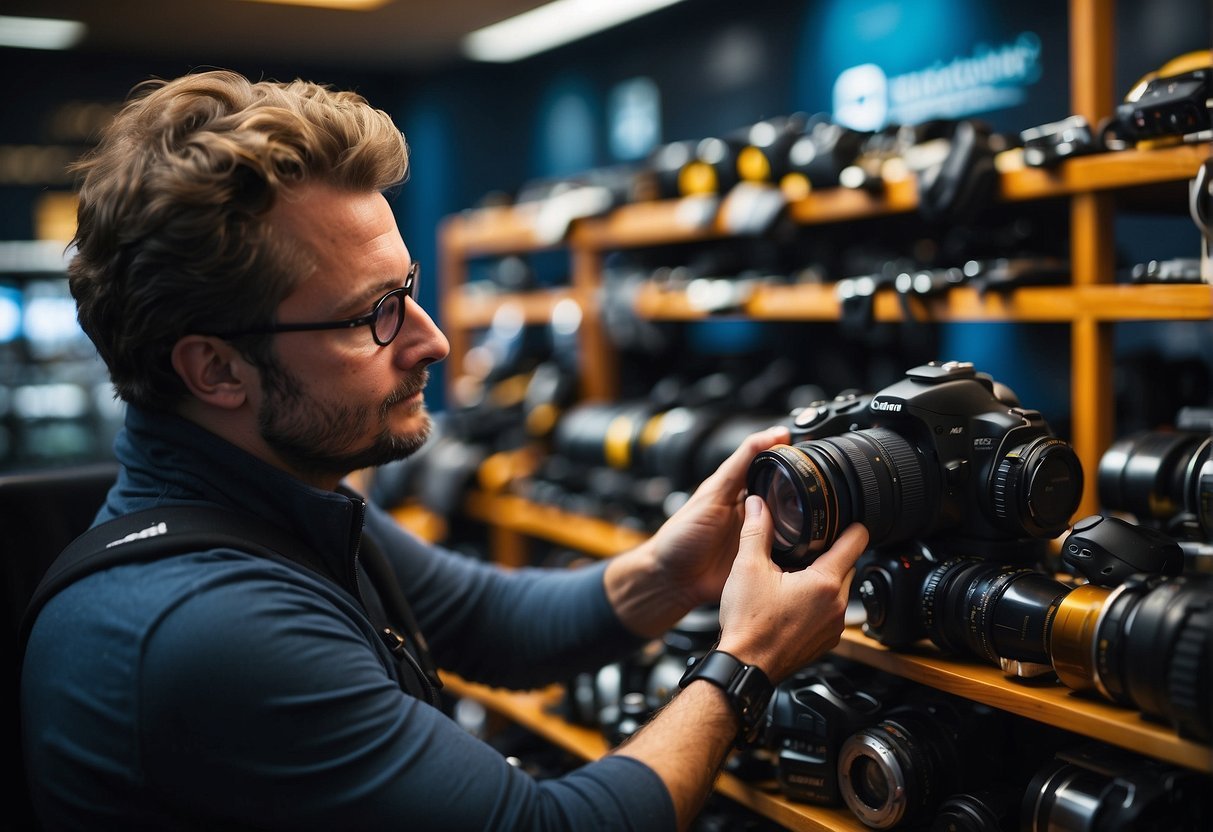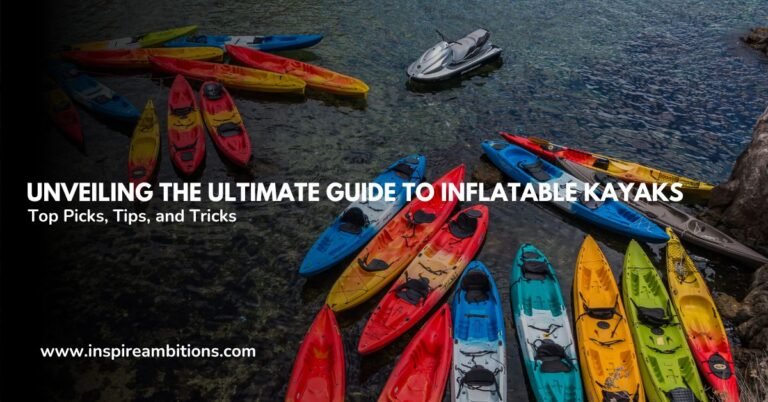Meilleur équipement de plongée pour les voyages – Examen des équipements compacts et fiables 2024
As the adage goes, the best things in life are the experiences we have and the memories we make. For scuba diving enthusiasts, the thrill of exploring underwater realms comes with the necessity of having proper gear.
However, when your playground is the vast ocean, and your adventures span continents, selecting the appropriate scuba gear for travel isn’t just a matter of preference—it’s a crucial aspect of your diving experience.
:max_bytes(150000):strip_icc()/full-set-of-scuba-diving-equipment--scuba-gear-and-accessories--1223442535-7472dd1b3cc647b7a0240e4ff28577c1.jpg)
Travelling with scuba gear introduces the need for high-performing, lightweight, and compact equipment to ease the burden of transport.
From the redefined sleekness of modern wetsuits and drysuits designed for easy packing to the advanced technology of portable dive computers, every gear you choose must ensure balance and travel-friendliness.
Ensuring your gear is well-maintained and cared for while on the move is equally important, as is selecting a destination that aligns with the capabilities of your equipment. After all, travel rigours never compromise the safety and enjoyment of your dives.
Best Scuba Gear for Travel – Key Takeaways
- Scuba gear for travel must combine performance with portability.
- Maintenance and practical packing solutions maximize gear longevity on the go.
- Selecting appropriate destinations enhances the overall diving and travel experience.
Selecting the Right Travel Scuba Gear

Choosing the right scuba gear for travel involves balancing portability and functionality. Divers need gear that is both lightweight and compact without compromising on quality.
Importance of Lightweight and Compact Design
Travelling with scuba gear necessitates equipment that is easy to pack and won’t incur excess baggage fees.
Lightweight and compact design are key features that allow for more efficient use of luggage space.
For instance, a travel-friendly regulator saves weight and ensures divers don’t have to rely on rental gear, which can vary in quality and performance.
Comparison of Travel-Friendly Scuba Gear
When comparing travel scuba gear, consider weight, size, and ease of packing.
A travel BCD, for example, should be slimmed down to reduce bulk, offering essential features like D-rings and pockets while shedding extraneous weight.
Dive light models designed for dive travel typically prioritize compact size, durability, and functionality.
Explore options that best suit your needs and the demands of your dive destinations.
Essential Scuba Gear for Travel
Before you embark on your underwater adventure, choosing the right scuba gear for travel is essential for convenience, safety, and enjoyment. Durable yet lightweight materials and compact designs dominate the selection of travel-friendly scuba equipment.
Travel BCDs
Travel BCDs (Buoyancy Control Devices) are at the heart of a diver’s gear. A favourite among divers is the Cressi Travelight BCD, known for its lightweight and compact design without sacrificing the functionality and comfort you expect from a full-feature BCD. These BCDs occupy minimal space when packed, making them ideal for travel.
Key Features of Travel BCDs:
- Lightweight materials.
- Foldable backplates for compact storage.
Travel Regulators
Your regulator is your lifeline underwater; a travel regulator must be reliable and light.
When travelling, look for regulators specifically designed for travel, which typically feature a minimalist design and are made from lighter materials to reduce weight without compromising performance.
Selecting Travel Regulators:
- Look for lightweight yet robust designs.
- Ensure they provide reliable performance under different diving conditions.
Travel Fins
The fins you choose should be responsive and easy to pack.
Go Travel fins and fins designed with reduced length and weight make them travel-friendly while still providing the thrust and control needed for efficient swimming.
Advantages of Travel Fins:
- Compact size for easy packing.
- Reduced weight helps meet airline luggage restrictions.
Wetsuits and Drysuits for Travel
Quand preparing for a dive trip, selecting the right wetsuit or drysuit is essential for comfort and convenience. Ensuring that your gear is travel-friendly can significantly enhance your diving experience.
Choosing the Right Wetsuit
When selecting a wetsuit for travel, consider the suit’s thickness et style based on your destination’s water temperature.
A popular option for temperate waters is the AquaFlex wetsuit, which provides flexibility and durability in a 5mm version.
Divers who prioritize portability might prefer the Aqua Lung Dive range, offering a variety of thicknesses to suit different environments.
UN lightweight shorty wetsuit could be sufficient for tropical destinations, ensuring easy packing without compromising protection.
Benefits of a Travel-Friendly Drysuit
Drysuits are an excellent choice for divers visiting cooler climates.
A travel-friendly drysuit like the Bare X-Mission Evolution Drysuit is designed with the advanced diver in mind, offering a balance between durability and packability.
This type of drysuit typically incorporates lightweight materials et streamlined design, making it an ideal companion for divers who require complete protection without the bulk commonly associated with traditional drysuits.
High-Performance Dive Computers
When planning your next underwater adventure, choosing the proper dive computer is crucial, especially if you’re looking for gear that’s tailored for travel. High-performance dive computers provide the functionality needed for various diving situations while being compact and easy to transport.
Features of Travel-Sized Dive Computers
Travel-sized dive computers strike a perfect balance between functionality and portability. Here’s what you should look for:
- Compact Size: Your dive computer should be small enough to fit easily in your travel bag yet robust enough to deliver the critical data you require.
- Battery Life: Look for models with long battery life to avoid the need for frequent charging, especially on trips where access to power might be limited.
- Intuitive Interface: An easy-to-navigate interface means you’ll spend less time fiddling with settings and more time enjoying your dive.
- Wireless Connectivity: Some dive computers offer wireless air integration and the ability to sync with mobile devices to log dives effortlessly.
- Readability: A clear, high-contrast display ensures you can quickly read vital information underwater and in low light.
- Multigas Capabilities: This allows you to switch gases during your dive, a critical feature for technical divers.
- Durability: High-quality materials resistant to corrosion and damage from impact are essential for frequent travellers.
Masks and Snorkels
In selecting scuba gear for travel, choosing the proper masks and snorkels is crucial for comfort and convenience. Innovative design elements ensure these items are travel-friendly without sacrificing performance.
Travel-Friendly Dive Masks
Prenant en considération travel-friendly dive masks, low-volume designs take precedence. Opt for masks with a silicone skirt that offers a snug fit to prevent leaks and ensure clarity underwater.
- Compact Frame: Seek out masks with a more petite frame, such as the Cressi F1 frameless mask, to save space in your luggage.
- Foldable: Some masks feature a foldable buckle system that lays flat, making them ideal for travelling.
Collapsible Snorkels for Easy Packing
Collapsible snorkels are a godsend for the travelling snorkeler. Their flexible silicone bodies allow for them to be folded and easily stored.
- Portable: Ensure the snorkel has a flexible section that you can compress without damage.
- Storage: Look for models with a storage case like the Phantom Aquatics Velocity Snorkel, which allows the snorkel to dry and maintain its shape after use.
Efficient Scuba Accessories for Travel
Selecting the right scuba accessories for travel can significantly enhance your diving experience without the burden of excess luggage. Look for items that are versatile, lightweight, and designed to make travelling easier.
Multipurpose D-rings and Pockets
D-rings provide a convenient attachment point for various diving tools and accessories.
Opt for a back-inflation BC with multiple D-rings made from lightweight materials like aluminium.
Choose models with pinch-to-release integrated weight pockets to streamline your profile in the water and reduce the need for a weight belt, thus cutting down on gear.
Additionally, zippered cargo pockets offer secure storage options with easy access.
Essential for keeping necessary items close, these pockets should be ample enough to hold items like dive lights or slates yet compact enough to avoid drag.
Packing and Transporting Gear
When planning a dive trip, selecting the proper storage for your scuba equipment and efficient packing methods are essential for a hassle-free travel experience.
Choosing the Right Dive Bag
Determining durability and size is crucial when selecting a dive bag to address your scuba equipment needs.
A robust duffle style or specialized dive bag is recommended for handling the rigours of travel.
Opt for a bag with a sturdy frame and wheels to make navigating airports less cumbersome. The Skog Å Kust DuffelSåk is a prime example, known for its heavy-duty construction and practical features tailored for scuba gear transport.
Tips for Packing Scuba Equipment
Strategic packing allows you to maximize space and protect your gear:
- Regulators and Instruments: A padded regulator bag safeguards these crucial components. Wrap each item individually or use bubble wrap for additional protection.
- Place heavier items like fins and BCDs at the bottom of your luggage to distribute weight evenly and prevent lighter items from being crushed.
- Clothing and Soft Items: Fill gaps with clothes or soft-dive accessories to provide cushioning.
- Final Check: Before sealing your luggage, ensure all zippers are closed and the air is expelled from BCDs to save space and avoid inflation during the flight.
Maintenance and Care on the Go
Maintaining your scuba gear while travelling is as crucial as selecting the right equipment. Proper care ensures performance and longevity, especially when away from home.
Easy-to-Clean Gear
For scuba divers on the move, choosing gear that is easy to clean is vital.
After diving, rinse your equipment with clean water to remove salt, chlorine, or biological matter.
Look for gear with simple designs and minimal intricate parts, making accessing areas that require cleaning easier.
Equipment such as regulators should be designed to prevent water from entering the first stage. But if it does, a blast of your breath through the second stage can help clear out dust before subsequent uses.
Durable Materials and Seals
Select gear made with durable materials that can withstand the rigours of travel and frequent use in various conditions.
Look for high-quality seals and o-rings resistant to corrosion and degradation.
Quality materials help prevent leaks and the need for repairs, which may be difficult to address while on a trip.
Reinforced zippers and anti-corrosion coatings on metal parts are telling signs of durable scuba gear designed for the diver on the go.
Innovations in Scuba Diving Gear for Travel
Travelling light is a high priority for divers exploring the oceans far from home. Innovations in scuba gear have made it easier to maintain high performance without the extra weight.
State-of-the-Art Lightweight Materials
When selecting gear, you seek durability and comfort without being weighed down.
Manufacturers like Cressi and Scubapro have revolutionized travel-friendly scuba gear by utilizing aluminium and carbon in their designs.
Aluminum offers strength without excess weight, perfect for tanks and frames. Carbon fibre components, found in fins or backplates, are renowned for their lightweight properties coupled with impressive resistance to damage.
Equipment such as the Scubapro GO fin is a testament to this focus on travel optimization. It provides reliability and power while remaining light enough not to tip the scales.
Similarly, the Cressi Travelight BCD exemplifies the move towards lighter gear. It incorporates a foldable design that reduces its footprint in your luggage without sacrificing essential features such as lift capacity and range of motion.
Expert Reviews and Recommendations
When purchasing scuba gear for travel, expert reviews and product testing by reputable sources can significantly assist in making an informed decision. These insights come from rigorous evaluations and real-world experiences of seasoned divers.
ScubaLab Tests and Reviews
ScubaLab, the testing division of Scuba Diving Magazine, is known for its lab tests and in-depth dive equipment reviews.
Their assessments are conducted in controlled environments and actual dive situations, ensuring they account for performance and reliability.
For example, the Mikron regulator is noted for its compact size without sacrificing quality, making it ideal for travel.
- Test Highlight: In a recent review, ScubaLab touted the Mikron as a top choice for its lightweight, travel-friendly design.
- Performance: Gear is evaluated across various parameters, such as ease of use, durability, and comfort.
Testimonials from Frequent Dive Travelers
Frequent drive travellers offer practical insights from their extensive experience with various equipment.
Lightweight and durable gear like the 3mm Delta Short Boots and the GO Travel fins by Scubapro come highly recommended for their portability and ease of packing.
- Durability: These products are favoured with the rigours of frequent travel.
- Confort: Travelers often emphasize comfort, noting the importance of well-fitting boots and fins.
Choosing a Travel-Friendly Dive Destination
When selecting the ideal travel destination for scuba diving, accessibility should be one of your primary considerations. Look for locations with direct flights from major airports to reduce travel time and connections, which can be crucial when transporting scuba gear.
Facilité d'accés
Your time is valuable, and the less of it you spend in transit, the more you’ll have for exploring underwater wonders.
Opt for destinations serviced by well-connected airports, and consider the ease of ground transportation to your final dive spot.
- Direct flights: More direct routes lead to less stress and gear handling.
- Local transport: Investigate if there are reliable taxi, shuttle, or car rental services.
Dive Operation Convenience
Scout for places with reputable dive operations that cater to travelling scuba divers. Having a shop that can rent out heavy gear or refill tanks can lighten your load and allow you to bring minimal equipment.
- Rental availability: Ensure quality gear is rentable at your destination.
- Proximity to dive sites: Look for accommodations close to dive operations or the actual dive sites.
Travel-Friendly Gear
Consider destinations that are known for requiring minimal gear. These destinations can offer a more relaxed and lighter travel experience.
Before you embark on your journey, be informed about the latest scuba gear that is travel-friendly.
Souviens-toi:
- Utilize dive gear suited for travel.
- Some destinations may offer lighter rental equipment options.
Choosing destination travel needs your journey and a more enjoyable dive experience.





